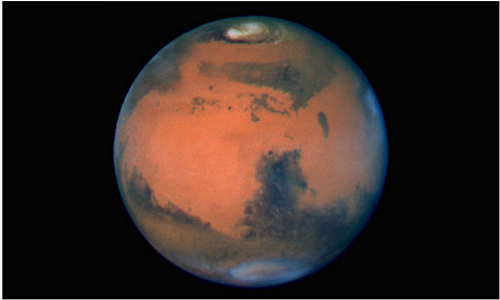First Martian life likely broke the planet with climate change, made themselves extinct

Ancient microbial life on Mars could have destroyed the planet’s atmosphere due to climate change, ultimately leading to its extinction, according to new research.
The new theory comes from a climate modeling study that simulated hydrogen-consuming and methane-producing microbes living on March about 3.7 billion years ago. At the time, the atmospheric conditions were similar to those that existed on the old Earth during the same period. But instead of creating an environment that would help them thrive and evolve, as happened on Earth, the Martian microbes may have doomed themselves the moment they started, according to the study published Oct. 10 in the review Natural astronomy. (opens in a new tab)
The model suggests that the reason life thrived on Earth and was doomed on Mars is due to the gaseous compositions of the two planets and their relative distances from Earth. Sun. Being farther from our star than Earth, Mars was more dependent on a powerful heat-trapping fog. greenhouse gas, such as carbon dioxide and hydrogen, to maintain lifelong hospital temperatures. So while ancient Martian microbes ate hydrogen (a potent greenhouse gas) and produced methane (an important greenhouse gas on Earth but less potent than hydrogen), they slowly ate in the cover trapping their planet’s heat, ultimately making Mars so cold that it could no longer evolve complex life.
Related: Curiosity rover finds evidence of past life on Mars may have been erased
As Martian surface temperatures fell from a tolerable range between 68 and 14 degrees (10 to 20 degrees Celsius) Fahrenheit to minus 70 F (minus 57 C), microbes fled deeper and deeper into the crust deeper and deeper. planet’s hottest – sinking more than 0.6 miles (1 kilometer) deep just a few hundred million years after the cooling event.
To find evidence for their theory, the researchers want to know if any of these ancient microbes survived. Traces of methane have been detected on Mars’ sparse atmosphere by satellites, as well as in the form of “alien burps” spotted by NASA’s Curiosity rover, which could be proof that the microbes still exist.
Scientists believe their findings suggest that life may not be innately self-sufficient in all of the enabling environments in which it appears, and can easily annihilate itself by accidentally destroying the foundations of its own existence.
“The ingredients for life are everywhere in the universe,” the study’s lead author, Boris Sauterey, an astrobiologist at the Institute of Biology at the Ecole Normale Supérieure in Paris, told Space.com. “It is therefore possible that life appears regularly in the universe. But the inability of life to maintain habitable conditions on the surface of the planet causes it to disappear very quickly. Our experiment goes even further because it shows that even a very primitive biosphere species can have a completely self-destructive effect.”
Source: www.todaypostimes.com















